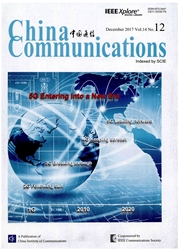

 中文摘要:
中文摘要:
Vehicular Ad-hoc networks(VANETs) are kinds of mobile Ad-hoc networks(MANETs), which consist of mobile vehicles with on-board units(OBUs) and roadside units(RSUs). With the rapid development of computation and communication technologies, peripheral or incremental changes in VANETs evolve into a revolution in process. Cloud computing as a solution has been deployed to satisfy vehicles in VANETs which are expected to require resources(such as computing, storage and networking). Recently, with special requirements of mobility, location awareness, and low latency, there has been growing interest in research into the role of fog computing in VANETs. The merging of fog computing with VANETs opens an area of possibilities for applications and services on the edge of the cloud computing. Fog computing deploys highly virtualized computing and communication facilities at the proximity of mobile vehicles in VANET. Mobile vehicles in VANET can also demand services of low-latency and short-distance local connections via fog computing. This paper presents the current state of the research and future perspectives of fog computing in VANETs. Moreover, we discuss the characteristics of fog computing and services based on fog computing platform provided for VANETs. In this paper, some opportunities for challenges and issues are mentioned, related techniques that need to be considered have been discussed in the context of fog computing in VANETs. Finally, we discuss about research directions of potential future work for fog computing in VANETs. Within this article, readers can have a more thorough understanding of fog computing for VANETs and the trends in this domain.
 英文摘要:
英文摘要:
Vehicular Ad-hoc networks(VANETs) are kinds of mobile Ad-hoc networks(MANETs), which consist of mobile vehicles with on-board units(OBUs) and roadside units(RSUs). With the rapid development of computation and communication technologies, peripheral or incremental changes in VANETs evolve into a revolution in process. Cloud computing as a solution has been deployed to satisfy vehicles in VANETs which are expected to require resources(such as computing, storage and networking). Recently, with special requirements of mobility, location awareness, and low latency, there has been growing interest in research into the role of fog computing in VANETs. The merging of fog computing with VANETs opens an area of possibilities for applications and services on the edge of the cloud computing. Fog computing deploys highly virtualized computing and communication facilities at the proximity of mobile vehicles in VANET. Mobile vehicles in VANET can also demand services of low-latency and short-distance local connections via fog computing. This paper presents the current state of the research and future perspectives of fog computing in VANETs. Moreover, we discuss the characteristics of fog computing and services based on fog computing platform provided for VANETs. In this paper, some opportunities for challenges and issues are mentioned, related techniques that need to be considered have been discussed in the context of fog computing in VANETs. Finally, we discuss about research directions of potential future work for fog computing in VANETs. Within this article, readers can have a more thorough understanding of fog computing for VANETs and the trends in this domain.
 同期刊论文项目
同期刊论文项目
 同项目期刊论文
同项目期刊论文
 期刊信息
期刊信息
